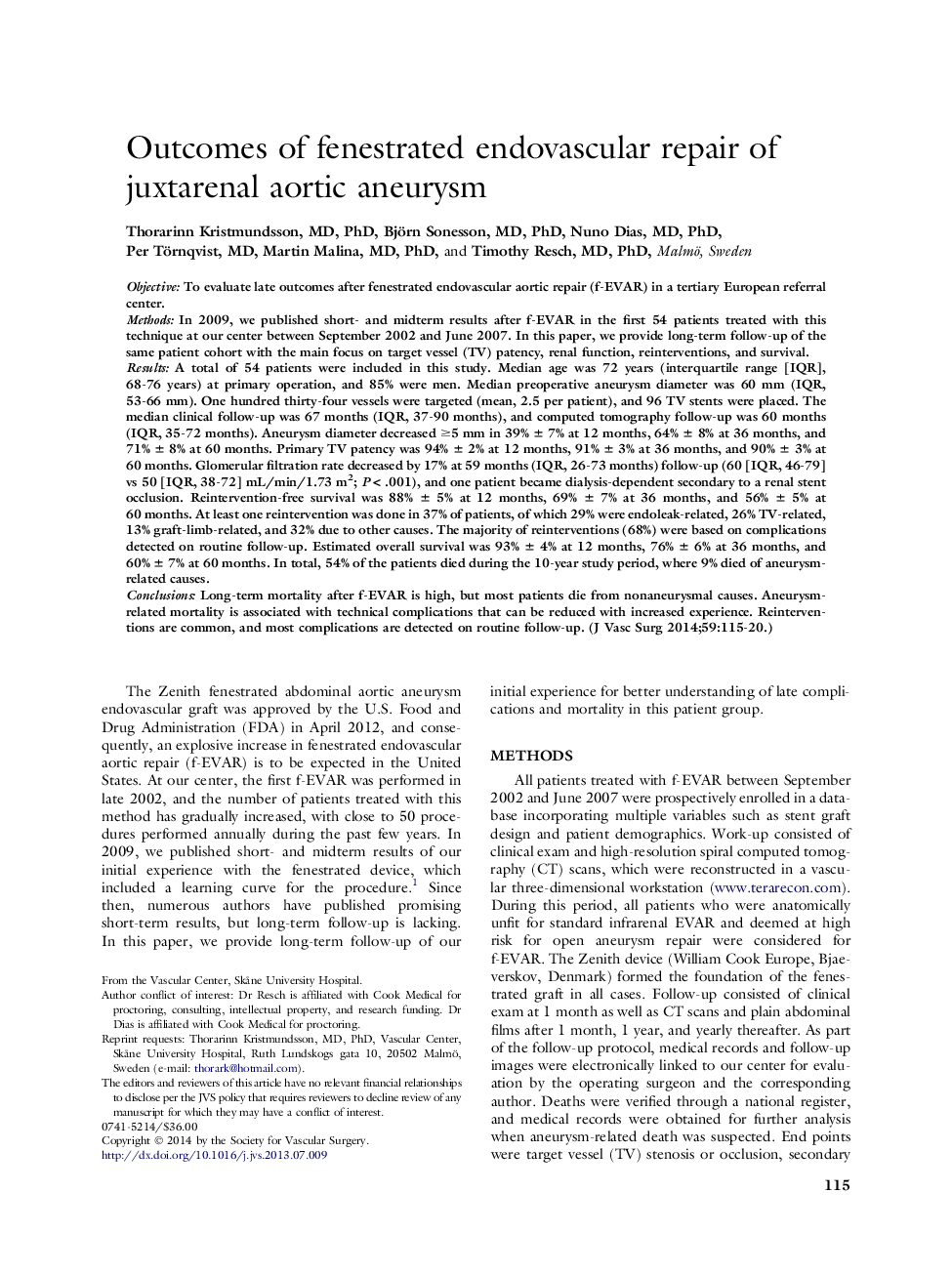| کد مقاله | کد نشریه | سال انتشار | مقاله انگلیسی | نسخه تمام متن |
|---|---|---|---|---|
| 5994854 | 1179836 | 2014 | 6 صفحه PDF | دانلود رایگان |
ObjectiveTo evaluate late outcomes after fenestrated endovascular aortic repair (f-EVAR) in a tertiary European referral center.MethodsIn 2009, we published short- and midterm results after f-EVAR in the first 54 patients treated with this technique at our center between September 2002 and June 2007. In this paper, we provide long-term follow-up of the same patient cohort with the main focus on target vessel (TV) patency, renal function, reinterventions, and survival.ResultsA total of 54 patients were included in this study. Median age was 72 years (interquartile range [IQR], 68-76 years) at primary operation, and 85% were men. Median preoperative aneurysm diameter was 60 mm (IQR, 53-66 mm). One hundred thirty-four vessels were targeted (mean, 2.5 per patient), and 96 TV stents were placed. The median clinical follow-up was 67 months (IQR, 37-90 months), and computed tomography follow-up was 60 months (IQR, 35-72 months). Aneurysm diameter decreased â¥5 mm in 39% ± 7% at 12 months, 64% ± 8% at 36 months, and 71% ± 8% at 60 months. Primary TV patency was 94% ± 2% at 12 months, 91% ± 3% at 36 months, and 90% ± 3% at 60 months. Glomerular filtration rate decreased by 17% at 59 months (IQR, 26-73 months) follow-up (60 [IQR, 46-79] vs 50 [IQR, 38-72] mL/min/1.73 m2; P < .001), and one patient became dialysis-dependent secondary to a renal stent occlusion. Reintervention-free survival was 88% ± 5% at 12 months, 69% ± 7% at 36 months, and 56% ± 5% at 60 months. At least one reintervention was done in 37% of patients, of which 29% were endoleak-related, 26% TV-related, 13% graft-limb-related, and 32% due to other causes. The majority of reinterventions (68%) were based on complications detected on routine follow-up. Estimated overall survival was 93% ± 4% at 12 months, 76% ± 6% at 36 months, and 60% ± 7% at 60 months. In total, 54% of the patients died during the 10-year study period, where 9% died of aneurysm-related causes.ConclusionsLong-term mortality after f-EVAR is high, but most patients die from nonaneurysmal causes. Aneurysm-related mortality is associated with technical complications that can be reduced with increased experience. Reinterventions are common, and most complications are detected on routine follow-up.
Journal: Journal of Vascular Surgery - Volume 59, Issue 1, January 2014, Pages 115-120
